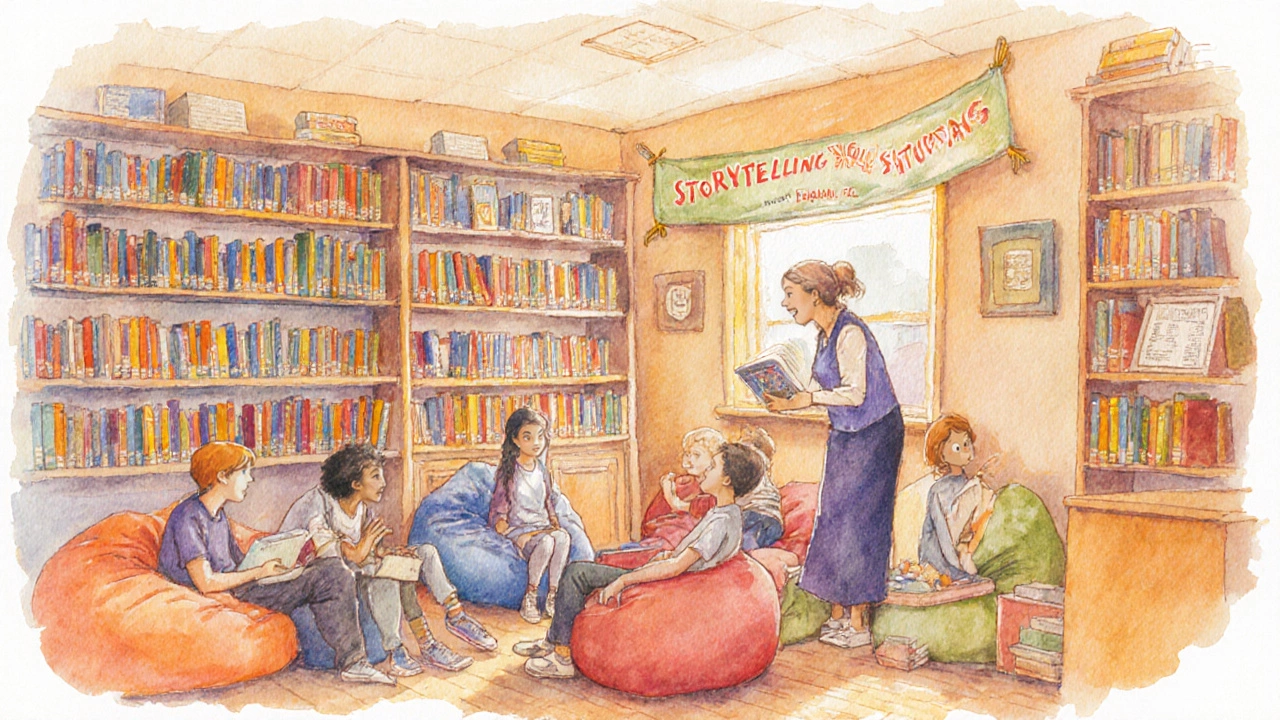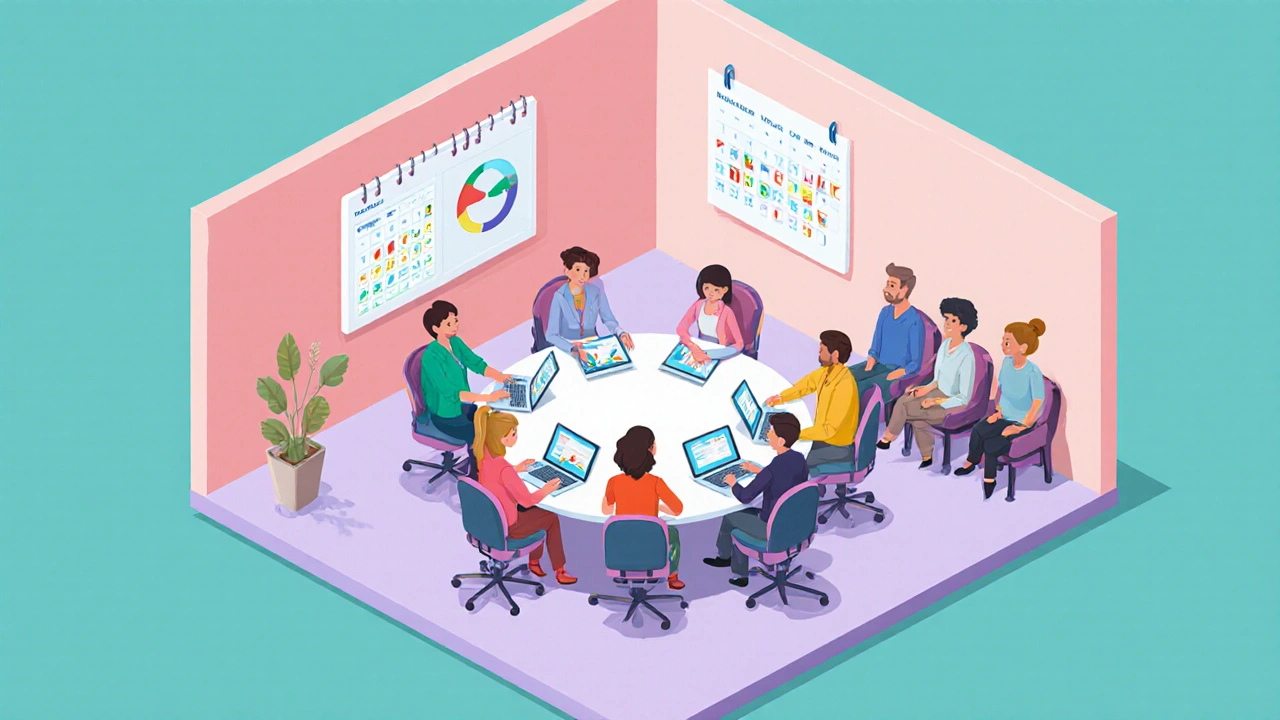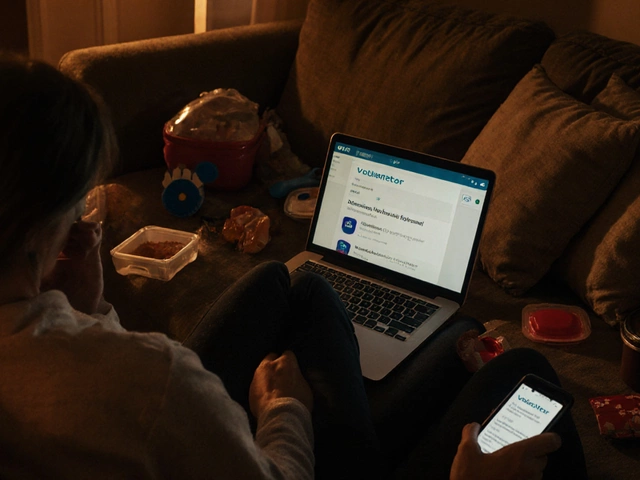Outreach Motivation Explorer
Empathy & Altruism
People who want to make a difference in others' lives. Often seen in volunteer work and social impact initiatives.
Connection & Belonging
Those seeking to build relationships and feel part of a larger community or movement.
Purpose & Identity
Individuals who define themselves by the causes they support and want to reinforce their values.
Key Takeaways
- Outreach drives personal fulfillment, community change, and professional growth.
- Different motivations-empathy, awareness, networking-shape the way outreach is planned.
- Successful outreach blends clear goals, authentic storytelling, and measurable impact.
- Common pitfalls include vague messaging, ignoring local context, and failing to follow up.
- Adapting strategies to audience, resources, and purpose makes outreach sustainable.
When people hear the word outreach, they often picture volunteers handing out flyers or a nonprofit hosting a charity run. The reality is far richer. Below we unpack why individuals and groups invest time, energy, and money into outreach, how those reasons translate into tangible results, and what you can learn if you’re planning your own effort.
Outreach is a process of proactively connecting with individuals or groups to share information, build relationships, or provide assistance. Whether it’s a church inviting new members, a tech startup announcing a product, or a youth club recruiting volunteers, the core act is the same: reaching out beyond your immediate circle.
1. The Human Drive Behind Outreach
At its heart, outreach satisfies three deep‑seated human needs.
- Empathy and Altruism - Many people feel a genuine concern for others’ wellbeing. This is often labeled Volunteerism. A study by the Global Volunteer Index (2024) shows 68% of volunteers cite “making a difference” as their primary motivator.
- Connection and Belonging - Reaching out creates social bonds. Networking isn’t just a corporate buzzword; it’s a way to feel part of something larger.
- Purpose and Identity - People often define themselves by the causes they support. Engaging in Community outreach can become a core part of personal identity, reinforcing self‑esteem.
2. Strategic Benefits for Organizations
Organizations-nonprofits, startups, local councils-don’t just do outreach for feel‑good moments. The activity serves concrete goals.
- Social Impact: Measurable change in community health, education, or environment. For example, a clean‑water campaign in rural Kenya reduced water‑borne illness by 27% within two years.
- Fundraising: Direct donations often spike after a well‑executed outreach event. In 2023, the charity Hope Horizons reported a 42% increase in donor sign‑ups following a city‑wide bike ride.
- Brand Awareness: Even commercial entities use outreach to introduce new products. A tech firm’s campus‑tour outreach to local schools doubled its internship applications.
- Relationship Building: Long‑term partnerships with local leaders, schools, and media outlets become easier after consistent outreach.

3. Types of Outreach and Their Typical Motivations
| Outreach Type | Primary Motivation | Typical Outcome |
|---|---|---|
| Awareness Campaign | Education & Advocacy | Increased public knowledge, policy shift |
| Volunteer Recruitment | Community Service | Expanded manpower, stronger local ties |
| Fundraising Drive | Financial Support for Mission | New revenue streams, donor base growth |
| Corporate Social Responsibility (CSR) Activity | Brand Reputation | Positive media coverage, employee pride |
| Public Relations Outreach | Image Management | Improved stakeholder perception |
4. Real‑World Scenarios that Illustrate Why People Reach Out
Scenario A - A Small Town Library: The library noticed a drop in teen visitors. Librarians launched a “Storytelling Saturdays” outreach program, partnering with local high schools. Within three months, youth attendance rose by 58%, and the library secured a grant for new media equipment. The librarians were driven by community engagement and the desire to keep the younger generation connected to public resources.
Scenario B - A Tech Startup: A new AI tool needed early adopters. The founders organized campus‑tour outreach at three universities, offering free workshops. The hands‑on sessions generated 1,200 sign‑ups and valuable feedback that shaped product improvements. Here, the motivation combined networking, brand awareness, and product validation.
Scenario C - A Climate Activist Group: To pressure local council on plastic bans, activists conducted door‑to‑door outreach, handing out concise fact sheets. The effort led to a council vote supporting a single‑use‑plastic ban, showcasing how education‑driven outreach can trigger policy change.
5. How to Design Outreach That Aligns With Your Why
Start with a clear statement of purpose. Ask yourself:
- What specific need am I addressing?
- Who is the audience, and what matters to them?
- Which motivation (empathy, networking, funding) fuels my effort?
Then map out the steps:
- Set measurable goals - e.g., “reach 500 households” or “raise $10,000”.
- Craft a concise message that reflects your core motivation. If empathy drives you, highlight personal stories.
- Choose channels wisely. Door‑to‑door, social media, community events, or email newsletters each serve different audiences.
- Allocate resources - time, volunteers, budget. A small budget can be stretched with partnerships.
- Track results and compare against your original motivation. Adjust tactics if the data shows a mismatch.

6. Common Pitfalls and How to Avoid Them
Even well‑intentioned outreach can fall flat. Here are frequent mistakes and quick fixes.
- Vague messaging - If people can’t grasp what’s in it for them, they tune out. Use a clear headline that answers the “what’s in it for me?” question.
- Ignoring local culture - A campaign that works in urban New Zealand may not resonate in a rural Maori community. Engage local leaders early to adapt tone and content.
- One‑off interactions - Outreach should build relationships, not just transactions. Schedule follow‑up meetings or send thank‑you notes.
- Measuring the wrong metrics - Counting flyers handed out looks good on paper but doesn’t reflect impact. Track conversions, attendance, or behavior change instead.
7. Leveraging Technology to Amplify Your Outreach
Modern tools make outreach more efficient.
- CRM platforms (e.g., HubSpot) help track contacts, schedule follow‑ups, and segment audiences.
- Social listening tools monitor conversations around your cause, allowing you to jump into relevant dialogues.
- Data visualization dashboards turn raw outreach metrics into easy‑to‑read charts that tell a story to donors and stakeholders.
Even small nonprofits can use free versions of these tools to keep outreach organized and data‑driven.
8. Turning Outreach Into a Sustainable Habit
Outreach shouldn’t be a once‑a‑year sprint. Build a rhythm that fits your resources.
- Monthly check‑ins - Review what worked, what didn’t, and adjust the calendar.
- Volunteer core team - Recruit a small group dedicated to planning and execution.
- Community advisory board - Invite local stakeholders to co‑design outreach, ensuring relevance.
- Celebrate wins - Publicly share successes. Recognition keeps momentum alive.
Frequently Asked Questions
What is the main purpose of outreach?
The core purpose is to connect with people who are outside your immediate circle, share information, and inspire action-whether that action is donating, volunteering, or changing a behavior.
How can I measure the success of an outreach campaign?
Focus on outcome‑based metrics: number of new volunteers recruited, funds raised, policy changes achieved, or increase in awareness measured through pre‑and post‑survey scores. Avoid counting only outputs like flyers printed.
Is outreach only for nonprofits?
No. Businesses use outreach for brand building, schools for enrollment drives, and governments for public health messaging. The underlying principle-reaching out to inform or assist-applies across sectors.
What’s the best way to start an outreach program with limited budget?
Leverage free channels: social media, community bulletin boards, and partnerships with local businesses. Recruit volunteers who can donate time and skills, and start with a small, clearly defined pilot to prove impact before scaling.
How does cultural sensitivity affect outreach effectiveness?
Cultural sensitivity builds trust. Tailor language, symbols, and delivery methods to the community’s values. Engaging local leaders as co‑creators often yields higher participation and reduces resistance.






